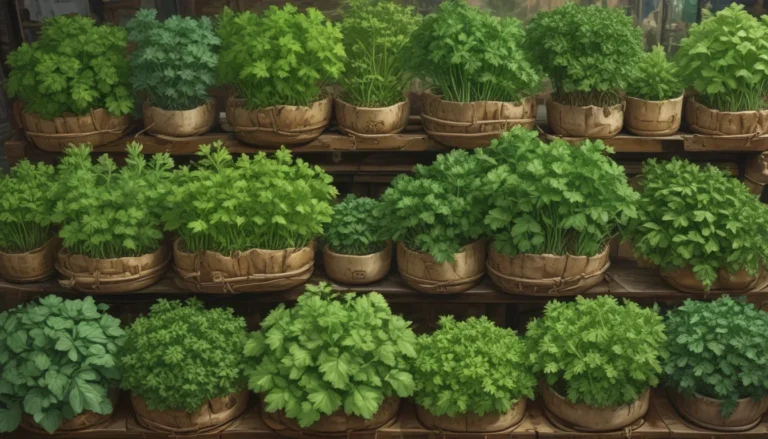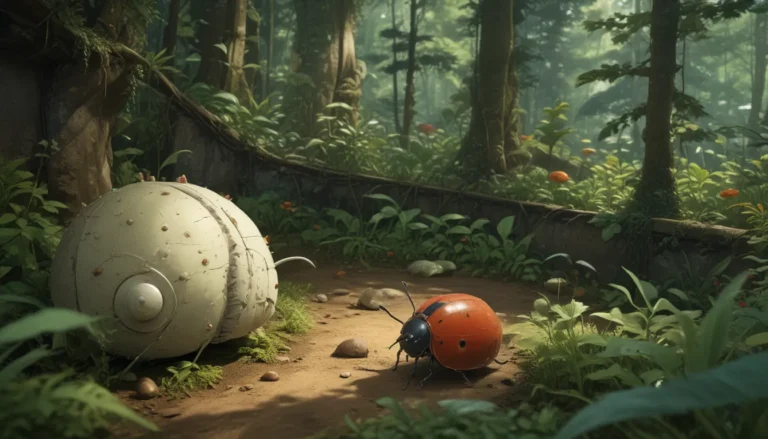Mastering Brussels Sprouts: A Complete Guide to Pruning and Topping for Successful Harvest

Brussels sprouts are notorious for being a tricky vegetable to grow in home gardens. While cabbage, turnips, kale, and radishes are more popular choices, there’s no denying that homegrown brussels sprouts boast a richer, nuttier, and more intense flavor compared to store-bought varieties.
To truly succeed with brussels sprouts, you need to understand when and how to prune them. With conflicting information available, it can be hard to know the correct approach. That’s where we come in!
Understanding Pruning Techniques
When it comes to pruning brussels sprouts, there are two primary techniques involved:
- Topping: Involves removing the top of the plant strategically to enhance your harvest.
- Lower Leaf Pruning: Includes snipping yellow or diseased leaves, thinning lower leaves for improved air circulation, and strategically removing lower foliage to optimize harvest.
In this comprehensive guide, we will delve into both techniques to help you achieve the best results. Here’s what you can expect to learn:
What You’ll Learn
- When to Prune the Lower Leaves
- How to Prune the Lower Leaves
- When to Top
- How to Top
The good news is that pruning plays a crucial role in growing brussels sprouts and is relatively easy to accomplish with a bit of guidance. Let’s get started!
When to Prune the Lower Leaves
Before we jump into the specifics of pruning, it’s essential to debunk some myths circulating within the gardening community.
Contrary to popular belief, you should not remove the lower leaves of your brussels sprout plant unless they are showing signs of yellowing, disease, or impeding air circulation. While images in seed catalogs may showcase pristine plants devoid of lower leaves, this practice is primarily for aesthetic or commercial purposes.
For home gardeners, maintaining the lower foliage is generally beneficial unless specific issues arise. Only prune lower leaves if you notice discoloration, spots, or fungal growth. Additionally, if air circulation around the buds is poor, consider removing up to a third of the leaves to promote better airflow.
Remember, when harvesting buds from plants where not all will be picked simultaneously, remove the leaf directly beneath the bud to facilitate harvesting.
Moreover, for those looking for uniform sprout formation, ‘kiting’ – removing a quarter of the lower leaves simultaneously with topping – can encourage consistency in sprout development.
How to Prune the Lower Leaves
To begin the pruning process, sanitize your clippers in a bleach-water mixture to prevent the spread of fungal and bacterial diseases. Cleanliness is crucial, especially when handling potentially diseased foliage.
When pruning lower leaves, use sharp scissors or secateurs to trim the leaves close to the stalk. Start with the lowest leaves and gradually work your way upward, ensuring not to remove more than a third of the foliage at a time.
If you wish to encourage a uniform harvest, wait until it’s time to top your plants and then prune the largest lower leaves by a third. Maintaining a balance between foliage removal and plant health is key to successful brussels sprout cultivation.
When to Top
Topping brussels sprouts remains a point of contention among gardeners. While some argue that topping has minimal impact on harvest yields, others swear by its benefits.
When topping, the goal is to remove the apical meristem to redirect the plant’s resources towards developing the axillary buds – the flavorful sprouts. Correct timing is crucial, with the optimal timeframe falling between 30 and 60 days before harvest.
Avoid topping too early, as this can lead to the plant allocating resources towards new stalk growth instead of bud development. Experiment with different cultivars, as some are specifically bred to eliminate the need for topping entirely.
Additionally, keep in mind that topping can synchronize bud maturation, allowing for a simultaneous harvest. Ideal for commercial growers and those seeking uniformity in sprout development, topping is beneficial but may not suit everyone’s harvesting preferences.
How to Top
To top your brussels sprouts effectively, wait until the buds have begun forming but are not fully mature. Use sanitized tools to snip several inches off the growing tip, ensuring not to cut too far down the stem.
Maintaining a balance between topping timing and sprout development is crucial for a successful harvest. By removing the topmost leaves, you encourage the plant to focus on bud maturation rather than excessive foliage growth.
Remember to sanitize your tools before and after topping to prevent any potential contamination. Enjoy the young leaves you’ve pruned as a tasty addition to your meals, similar to kale.
Maintaining Healthy Brussels Sprouts
Pruning and topping are fundamental aspects of cultivating brussels sprouts successfully. While these plants may present challenges, mastering these techniques can elevate your gardening experience. Monitoring your plants, understanding their needs, and timing your interventions correctly are the keys to a bountiful harvest.
Are you growing brussels sprouts this season? Have you tried pruning or topping them? Share your experiences and tips in the comments below!
We hope this guide has provided you with valuable insights into pruning and topping brussels sprouts for optimal growth. If you’re eager for more brussels sprout wisdom, explore our additional guides on related topics:
- Loose-Leafed Brussels Sprouts: Strategies for Improving Head Formation
- Harvesting Brussels Sprouts: Best Practices for a Bountiful Yield
- Identifying and Managing Common Brussels Sprout Diseases: Protecting Your Crop
Remember, success in gardening often lies in attention to detail and thoughtful interventions. Keep learning, experimenting, and enjoying the rewards of your efforts in the garden!





